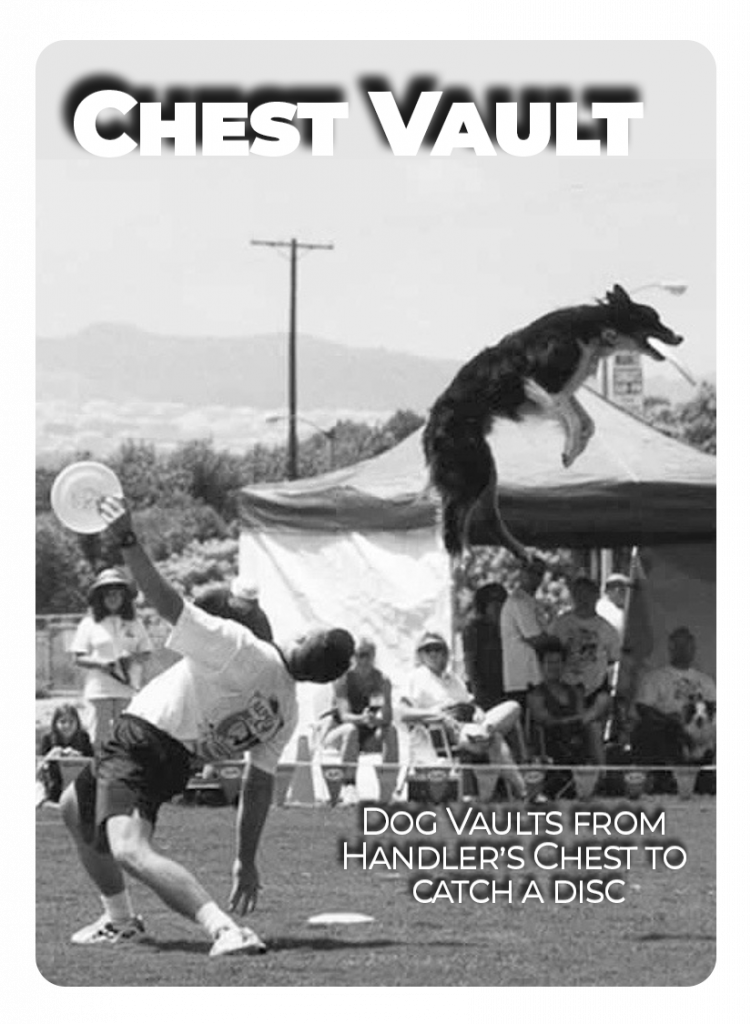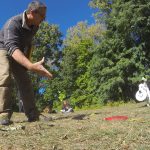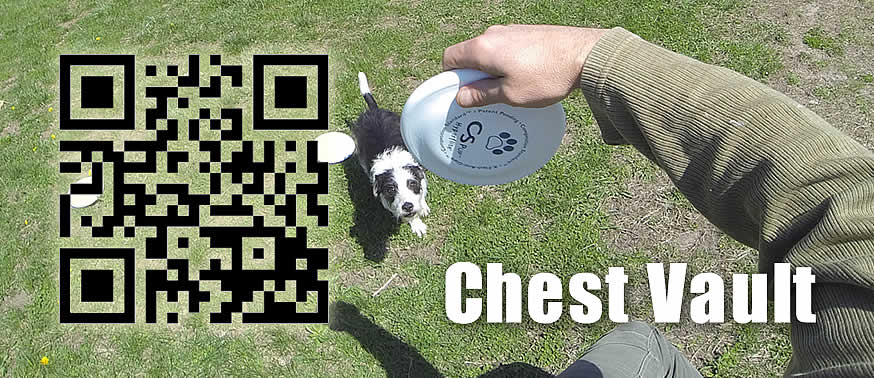
Chest Vault
Chest Vault Over

the dog leaps up and vaults over the handler, front to back, from the handler’s chest.
3 Tips for the Chest Vault Over:
- lean way back
- 2-3 yards set up distance
- cue direction and cue high
- upside down toss
Provide a Stable Horizontal Obstacle
you want to lean back as far as you comfortably can, pretty much. there can be some vertical orientation to your chest on your Chest Vault, but the flatter the better.
Do your best to provide a horizontal vaulting surface for your dogs to leap from. This often means a pretty serious limbo position, so it’s not exactly for the un-flexible.
You might get some additional stability and a better horizontal angle by putting your non-throwing leg forward of your throwing leg.
Make sure you are stable.
2-3 Yards Away for the Set Up
the Chest Vault requires at least a stride and a half to create enough forward momentum required to catch a disc and miss landing on your face. 2-3 strides is a good rule of thumb for setting this skill in training and performance.
Make sure you are not crowding your dog too much. Give The Give is a retrieve to the hand. A cued Give is a foundational skill that is not super useful in the actual performance of disc dog freestyle, and has huge applications for... More your dog enough space to step forward, collect themselves and then leap.
The Give is a retrieve to the hand. A cued Give is a foundational skill that is not super useful in the actual performance of disc dog freestyle, and has huge applications for... More your dog enough space to step forward, collect themselves and then leap.
Cue Direction and Cue High
an effective cue for this move is a flash of the disc up. tell the dog where the target will be. then you make the throw. just put it right up where you said it would be. it’s a tiny, 12 inch toss max on this vault. super easy…
The natural tendency is to tap the chest to cue this move, try to avoid that. The dog doesn’t need the disc touching your chest to figure anything out. You’re setting your chest in the dog’s face and putting the disc up in the air, it’s pretty obvious where the dog is supposed to vault from.
The dog needs to know where the disc is going to be not what they’re leaping off of.
Try Throwing it Upside Down
an upside down Backhand works really well for this toss. give it a shot.

A tiny little 12-20 inch toss is required for this move. It is totally doable with a bunch of throws, but an upside down Backhand The Backhand toss is the traditional disc throw. While it might not be the easiest throw of them all, it is the easiest to throw a hundred yards, and it is the easiest... More tends to be the natural solution to this from a balance and body position standpoint.
The Backhand toss is the traditional disc throw. While it might not be the easiest throw of them all, it is the easiest to throw a hundred yards, and it is the easiest... More tends to be the natural solution to this from a balance and body position standpoint.



